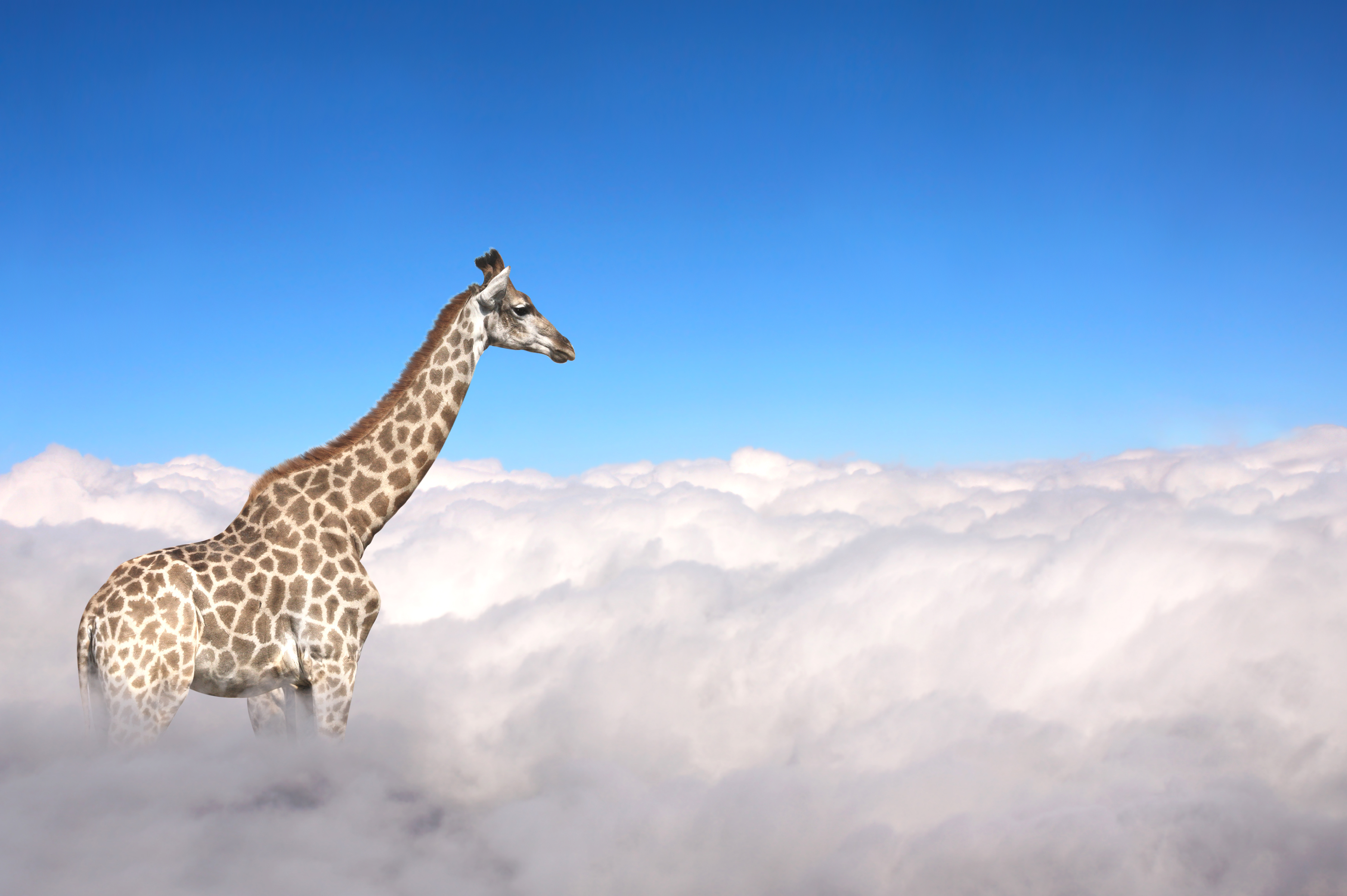#NephMadness 2022: Animal House 3 – Life at the Extremes
Submit your picks! | NephMadness 2022 | #NephMadness | #AnimalHouse
Kelly Hyndman @DrKeeksPhD
Kelly Hyndman is an Assistant Professor of Medicine in the Section of Cardio-Renal Physiology and Medicine, Division of Nephrology, at the University of Alabama at Birmingham. She has trained both in comparative physiology and kidney physiology labs and is currently a principal investigator of a basic science lab with research interests in novel mechanisms of fluid-electrolyte balance. She is also the Selection Committee Member for the Animal House Region.
Competitors for the Animal House Region
Giraffe vs Whale
Bear vs Lungfish

Photo of Finn by @SusanQuaggin (used with permission)
We may all still be debating whether the hagfish is cuddly or creepy after NephMadness 2021 Animal House 2, but this year’s Animal House region is strong with animals representing some pretty extreme physiological conditions! How does the giraffe survive with blood pressure high enough to perfuse the brain while at the same time not damaging the kidneys? Likewise, marine mammals like whales dive deep and experience extreme external pressure that could collapse lungs, cause edema, hypoxia, acid-base disturbances, just to name a few issues they must handle. Meanwhile, we have a fish that must breathe air but can also estivate for months to years going head to head with the bear– a mammal that annually hibernates and becomes anuric. How can the blood be filtered and waste excreted if you are “asleep” for months on end? Yet again, Animal House 3 is here to explain some physiological adaptations that allow animals to live at the extremes, all the while teaching us about our own physiology.
Life handling extreme pressure

Copyright: Lukiyanova Natalia frenta / Shutterstock
As humans we worry (or should worry) about our blood pressure. We know high blood pressure is the “silent killer” and can lead to all sorts of complications including kidney injury. The vasculature in our kidneys (like all other organs) has the ability to autoregulate and maintain glomerular filtration rate and renal blood flow even when blood pressure changes. But in pathological settings, like diabetic or sickle cell nephropathy, or hypertensive kidney injury, the glomerulus can see pressures too high leading to damage of our filtration barrier. With this in mind, it is then very impressive that the giraffe, whose systolic blood pressure at the level of the heart is 200-300 mm Hg, doesn’t experience extreme kidney injury. Moreover, it was opposite to what you would expect for giraffes to have lower GFR and renal blood flow.
Although it is still debated why GFR/RBF is low given the high pressure, one possible explanation is a thick kidney capsule and valve between the renal vein and vena cava act to increase the kidney interstitial hydrostatic pressure. It is predicted that the bowman capsule pressure is 45-50 mm Hg in the giraffe compared to 0-5 mm Hg in other mammals. I was lucky enough to see, at Dr. Peter Bie’s poster at the Experimental Biology meeting many years ago, a preserved giraffe kidney, and the capsule was impressive! These adaptations may help buffer blood pressure-induced injury. But what about animals that live with high external, environmental pressure?
Diving mammals like pinnipeds (seals, sea lions, and walruses) and cetaceans (whales, dolphins, and porpoises) can dive deep and hold their breath for long periods. Even the father of comparative physiology, Dr. August Krogh, was fascinated by diving mammals like the blue whale. For every 10 meters of depth, diving mammals experience 2x the hydrostatic pressure. That means when the beaked whales off the coast of California dive 2,000 meters they can experience 400x greater hydrostatic pressure than at the ocean surface. These dives are not only deep but long (an hour or longer), meaning oxygen will be depleting and carbon dioxide accumulating.
It is not surprising that diving mammals have many adaptations to limit organ damage. They have low metabolic rates, high oxygen storing capabilities, and excellent acid-buffering. To prevent decompression syndrome (Caisson’s disease) caused by nitrogen invasion of the blood and tissues, diving mammals have a rete mirabile, “wonderful net” in limbs that has efficient countercurrent exchange of gasses, ions, and temperature, and can be quickly shunted off during a dive such that only the brain and heart are perfused. In the diving blue whale, heart rate drops to only 2-3 beats per minute and it is hypothesized that this will reduce organ perfusion and prevent decompression syndrome.

Copyright: Christian Vinces / Shutterstock
Humans also have retia mirabilia, for example near the carotid, and the vasa recta of our kidneys shares similar functions. But how do diving mammals prevent ischemia-induced kidney injury? Whales, like other cetaceans, have a very unique kidney structure call renules. These are, in essence, multiple small kidneys that look almost like bunches of grapes. The glomeruli and nephrons in these renules are smaller but there are more of them resulting in a similar glomerular mass to kidney parenchymal mass like other mammals. Having shorter proximal tubules and greater glycogen stores suggests that 1) lower resistance to intraluminal flow and 2) a proximal tubule metabolic switch to anaerobic glycolysis during the dive, thus potentially reducing free-radical induced injury. The renules also contain a collagen-rich tissue called the “sporta perimedullaris musculosis” which may contract and empty the medulla of urine before a dive to prevent concentration of urea and cytotoxic effects.
Thus, whether an animal lives with high blood pressure, or extreme variations in environmental pressure, mechanisms have evolved that protect their kidneys.
Staying healthy while sleeping your life away
What should you do if you live in a very cold, snowy environment where food may be scarce for part of the year? Or a hot, dry environment, where there is no rain or ponds for months, maybe years on end? As humans, we can put on a sweater or turn on the heater – we can adjust our environment to make us feel comfortable. Sidenote: the World Health Organization thinks that for healthy, appropriately dressed humans, the comfortable room temperature is 18-24 Celsius (64-75F).

Copyright: Photo Spirit / Shutterstock
But for most other vertebrates, changing their fur or habitat isn’t an option. As such, a variety of vertebrates (and invertebrates) have evolved to enter a state of torpor – the physiological changes to body temperature, metabolism, and water balance in order to survive extreme environmental conditions. Hibernation is multiple days to months of torpor during cold conditions, while estivation is a period of torpor during hot and dry periods. Torpor involves reducing the metabolic rate and thereby reducing metabolic waste that must be excreted, and switching from carbohydrate metabolism to lipid fatty acid oxidation. For hibernating bears, GFR is significantly reduced and they are anuric because their bladders reabsorb fluid. They also don’t need to worry about too much nitrogen cytotoxicity because the little urea produced is recycled back into amino acids and proteins. These warm-bodied endotherms can survive the harsh winter.
But what about ectotherms? There are frogs and fishes that live in such cold climates that they freeze. The wood frog turns to an ice block but can thaw out and thrive because they have evolved a number of cryoprotectant (antifreeze) mechanisms. At the other temperature extreme, the lungfish will estivate for months to years during the hot, dry seasons in Africa, South America, and Australia. Lungfish are the closest living relative to the tetrapods and maybe the coolest fish (sorry, hagfish). They are obligate air breathers unlike all other fishes that solely rely on the gills for gas exchange. They can walk on land with their fins, and they can form a cocoon and estivate for months to years to prevent death by dehydration during dry seasons.

Photo of Methuselah by Gayle Laird / California Academy of Sciences (used with permission)
Like the hibernating bear, estivation is a state of hypometabolism, shutting off GFR, and activating the vasotocin- (the evolutionary parent to arginine vasopressin)-aquaporin system but not the renin-angiotensin-aldosterone system. Recent studies have examined the lungfish cocoon and determined it is a “living tissue that prevents bacteria invasion”. Since the 1930s, scientists have known that lungfish have large deposits of granulocytes in the gut, kidneys, and gonads which are thought to be functionally equivalent to mammalian neutrophils. There are also increased granulocytes in the skin during estivation and they transmigrate into the cocoon, which is hypothesized to prevent bacterial infections during their long torpor. The function of these granulocytes in the kidney is unclear, but perhaps they help prevent kidney injury during estivation.
Humans unfortunately cannot dive to the depths like the marine mammals, nor could we survive long with blood pressures like the giraffe nor enter a prolonged state of torpor. But by defining the mechanisms that allow these animals to survive and thrive, it can help us understand our limitations. Determining the mechanisms that limit kidney injury following torpor-induced hypoperfusion or understating how metabolic switches protect the kidneys and other organs may lead to novel therapeutic approaches to help improve our kidney health.
– Guest Post written by Kelly Hyndman @DrKeeksPhD
As with all content on the AJKD Blog, the opinions expressed are those of the author of each post, and are not necessarily shared or endorsed by the AJKD Blog, AJKD, the National Kidney Foundation, Elsevier, or any other entity unless explicitly stated.
Click to read the full Animal House region


Leave a Reply